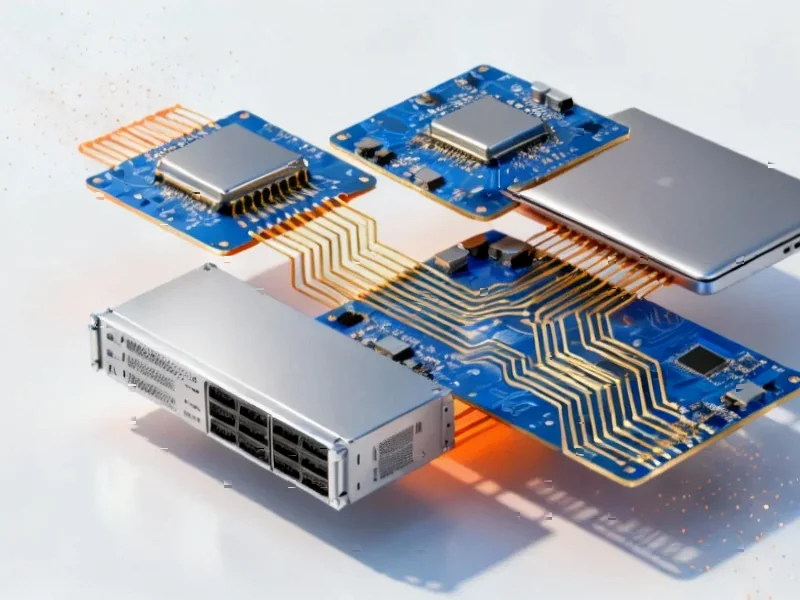In a move that could reshape technology manufacturing geography, HP has begun producing computers in Saudi Arabia, betting big on the kingdom’s ambitious push to become the Middle East’s answer to Shenzhen. This isn’t just another factory opening—it’s a strategic chess move in the global realignment of tech supply chains post-pandemic, and it signals a fundamental shift in how Western tech giants are thinking about production, proximity to markets, and geopolitical risk.
Table of Contents
The Saudi Manufacturing Gambit
According to reports, HP has partnered with SAMI Advanced Electronics Company, a subsidiary of the Saudi Arabian Military Industries, to establish production in Riyadh. Operations began this month with HP’s EliteDesk line of desktop PCs, the company’s first locally manufactured systems optimized for AI applications and enterprise use. What’s particularly noteworthy is the scale ambition—the facility is expected to produce millions of units before the end of the decade and expand into other HP product lines.
HP’s managing director for the Middle East and North Africa, Fadle Saad, emphasized the strategic nature of the partnership, stating that “Saudi Arabia is developing rapidly and needs partners who can move fast, invest, and create tangible value.” This rhetoric aligns perfectly with the kingdom’s Vision 2030 objectives, but the real story here extends far beyond corporate diplomacy.
Beyond Pandemic Resilience
While executives cite pandemic-era supply chain disruptions as motivation for regional production, the Saudi move represents something more profound than mere risk mitigation. We’re witnessing the early stages of a fundamental rethinking of global manufacturing footprints. For decades, the formula was simple: produce in Asia, ship globally. Now, companies are recognizing the strategic value of regional manufacturing hubs that can respond faster to local market needs while reducing exposure to geopolitical tensions and shipping uncertainties.
“The calculus has changed dramatically,” says manufacturing analyst Sarah Chen of TechPath Research. “When you factor in rising labor costs in China, persistent shipping challenges, and the strategic importance of the Middle East as both a market and logistics crossroads, Saudi Arabia starts looking less like an experiment and more like a necessity for companies wanting to compete in the next decade.”
The Competitive Landscape Heats Up
HP isn’t going it alone in the Saudi desert. The initiative forms part of the broader “Remal” program—a technology manufacturing partnership that notably includes Foxconn, the world’s largest electronics manufacturer. This suggests we’re looking at a coordinated effort to build comprehensive manufacturing ecosystems rather than isolated assembly operations.
Even more telling is the parallel investment by Lenovo, which reportedly entered into a $2 billion partnership with ALAT, a $100 billion Public Investment Fund-owned firm, to produce personal computers and servers in Riyadh. When two of the world’s largest PC makers make simultaneous billion-dollar bets on the same emerging manufacturing hub, it’s worth paying attention. Lenovo’s facility, covering more than 200,000 square meters in the Special Integrated Logistics Zone, will employ thousands and serve as the company’s Middle East and Africa headquarters.
The Broader Geopolitical Context
Saudi Arabia’s manufacturing push comes at a pivotal moment in global technology politics. As tensions between China and Western nations continue to simmer, diversification away from Chinese manufacturing has become a strategic priority for many companies. Saudi Arabia offers an attractive alternative—politically stable, investment-friendly, and strategically located at the crossroads of Europe, Asia, and Africa.
The kingdom’s “Saudi Made” labeling program, now appearing on everything from electric vehicles to consumer electronics, represents more than just national pride. It’s a branding exercise aimed at convincing global consumers and businesses that Saudi manufacturing can meet international quality standards. The success of this effort could determine whether the kingdom becomes a true manufacturing hub or remains primarily an assembly point.
Challenges and Opportunities
Building a technology manufacturing ecosystem from scratch presents significant challenges. While Saudi Arabia has capital and ambition in abundance, it lacks the deep supply chains and experienced workforce that make Asian manufacturing so efficient. The Remal program’s focus on transferring production engineering, quality control, and digital integration capabilities to Saudi engineers and technicians suggests recognition of this gap.
Meanwhile, the opening of HP’s artificial intelligence research and development center in Dhahran indicates a broader strategy—one that combines manufacturing with innovation. This dual approach could help Saudi Arabia avoid the “assembly trap” that has limited the economic impact of manufacturing in some emerging markets.
Market Implications
For businesses and consumers in the Middle East and North Africa, regional manufacturing could mean faster delivery times, better customization for local markets, and potentially more competitive pricing. HP executives noted that producing closer to end markets reduces shipping lead times and allows for regional customization—advantages that could help the company gain market share in rapidly growing Middle Eastern markets.
The timing is particularly strategic given the increasing importance of AI-optimized hardware. By launching with AI-ready EliteDesk systems, HP positions itself to capture enterprise demand as Middle Eastern companies accelerate their digital transformation initiatives.
The Road Ahead
As Saudi Arabia continues its aggressive push under Vision 2030, we can expect more technology manufacturers to establish operations in the kingdom. The combination of government support through the Public Investment Fund, strategic location, and growing domestic market creates a compelling value proposition.
However, the real test will come in execution. Can Saudi Arabia develop the supply chain depth and technical expertise to compete with established manufacturing hubs? Will quality meet global standards? And perhaps most importantly, can the kingdom attract enough additional manufacturers to create the ecosystem effects that make locations like Shenzhen so dominant?
HP’s bet represents more than just another factory—it’s a vote of confidence in Saudi Arabia’s manufacturing ambitions and a signal that the global technology supply chain map is being redrawn. As one industry insider noted, “If they can get this right, we might look back at 2025 as the year the Middle East became a serious player in global tech manufacturing.”
Related Articles You May Find Interesting
- Helium Browser Challenges Chrome With Privacy-First Approach and Native AI Shortcuts
- Webb Telescope Finds Life’s Building Blocks in Another Galaxy
- Microsoft’s Mico Brings Personality Back to AI Assistants
- Microsoft Tests Device Cards and Start Menu Refinements in Latest Windows 11 Preview Builds
- Swift SDK for Android Launches in Preview, Expanding Cross-Platform Reach



